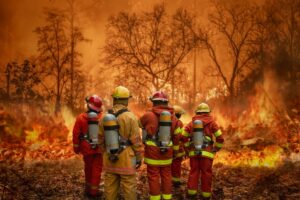On September 17, the Occupational Safety and Health Administration (OSHA) responded to concerns about the agency’s rulemaking on emergency response and its potential impact on voluntary emergency responders.
On February 5, OSHA issued a notice of proposed rulemaking (NPRM) for an emergency response standard to replace its decades-old fire brigades standard. Federal OSHA doesn’t directly regulate volunteer emergency responders, but some state safety and health programs treat volunteers as employees under state law.
The agency reported receiving comments on the NPRM raising concerns about the economic feasibility of the proposed standard for volunteer fire departments. OSHA acknowledged that comments submitted to the rulemaking docket provided crucial information that the agency didn’t have earlier in the rulemaking process.
The agency made a commitment to assessing and minimizing the detrimental effects of any final regulation on volunteer fire departments. One step the agency could take is to exclude voluntary emergency response organizations entirely based on economic feasibility concerns.
The initial comment period on the NPRM has closed. However, stakeholders can continue to provide data and information during a public rulemaking hearing scheduled for November 12 and a post-hearing comment period.
OSHA’s advisory committee working group on the emergency response rulemaking included representatives from labor and management; career, volunteer, and industrial responders; and other stakeholder communities.
OSHA’s fire brigades standard was established in 1980, covering contractor and employee industrial fire departments. Since then, emergency response has been covered by a patchwork of agency standards, none of which was intended as a comprehensive emergency response standard, according to the agency.
The existing federal standards don’t address the full range of hazards emergency responders encounter or reflect changes in performance specifications for protective clothing and equipment or improvements to health and safety practices that have been incorporated into subsequent industry consensus standards.
The existing OSHA standards also aren’t aligned with the Department of Homeland Security’s National Incident Management System (NIMS), which guides all levels of government, nongovernmental organizations, and the private sector in preventing, protecting against, mitigating, responding to, and recovering from emergency incidents.
OSHA’s proposal would establish a standard in line with the Federal Emergency Management Agency’s (FEMA) National Response Framework and align the agency’s standard with current industry consensus standards issued by the National Fire Protection Association (NFPA) for safely conducting emergency response activities. It also would cover a wider range of private sector emergency responders, including firefighters, emergency medical service providers, and technical search-and-rescuers.
Emergency responders face a wide range of hazards, including the following:
- Personal injury, such as fractures, sprains, internal bodily trauma, dislocations, chemical burns, and chemical pneumonia;
- Acute and chronic health conditions;
- Adverse mental health outcomes, such as anxiety and depression, burnout, post-traumatic stress disorder (PTSD), substance use disorder, and suicidality; and
- On-duty death.
The proposed standard would cover private sector emergency service organizations (ESO), workplace emergency response employers (WERE), and workplace emergency response teams (WERT). In addition to overhauling the fire brigades standard, the proposal also would amend the standards for automatic sprinkler systems, hazardous waste operations and emergency response (HAZWOPER), portable fire extinguishers, respiratory protection, and standpipe hose systems.

